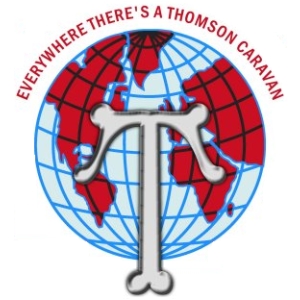|
| |
|
 |
| . . . depend equally on how a caravan
is put together |
The floor is laid like the
one at home, but on top of the chassis, using tongue-and-groove
timber a full ¾in. thick. Underneath it is thickly coated
with a bitumous-based preservative. On top is eventually laid
a deep pile carpet with foam underlay.
Not only does it look and feel good, but it provides insulation where it is most needed.
The walls and end panels are brought to the base, followed by the roof, a one-piece unit, torsionally very strong because of its cantilever contraction.
Caravanners like windows, large ones and plenty of them. Windows inevitably reduce the rigidity of the body, but in the T-Line this is minimised by the use of the Ellbee window, in which the frame is part of the unit. This means much more accurate fitting, minimising draughts and teaks, providing a stiffening effect.
The same principle is now applied to the doorway, again with a frame or surround as an integral part of the unit, for a snug fit with double weather strip.
One does not need to be an expert to see the quality in the fittings, the furniture units, the easy-clean plastic surfaces, the rich upholstery and curtains, and Sin. thick polyurethane mattresses of the correct density for comfort while sitting or sleeping.
Foam mattresses, incidentally, are not only more durable than the interior-sprung type, but are only one quarter of the weight, saving some 80lbs.
Look at the details, like the full-length piano-type hinges, the positive door catches that won't spring apart on the move, spilling contents.
Materials are important, but quality and durability depend equally on how a caravan is put together. The joiner built tradition is the same, but the difference is in mechanisation, the use of power tools.
Production is not only quicker, and thus less costly, but it is more accurate. It would take a highly skilled craftsman to match the accuracy of a multi-headed cross-cut saw which can simultaneously produce six identical pieces of timber.
Or the multi-headed circular saw which does eight rips at a time without need for corrective planning.
Pieces that are precisely cut, joints accurately made, mean that each part fits snugly together in the jig, to produce when everything is joined, a lightweight caravan that is strong and rigid. |
|
|
| Reproduced from a 1970 publication by Thomson T-Line Caravans
Ltd called The "T-Line Story" |
|
|
|
|
|
|
|
| |
| |
 |
| |
Copyright © 1998 - 2015 Thomson T-Line History & Information |
|
| |
Disclaimer - The information provided on this Website site is offered with no warranty as to the authenticity, suitability or competence of the individual, company or service quoted here in. The Website shall not be liable for any damage or difficulty, direct or indirect, arising from utilization of the information contained within these pages. Thomson T-Line History & Information is not responsible for the content of external website's. |
|
| |


